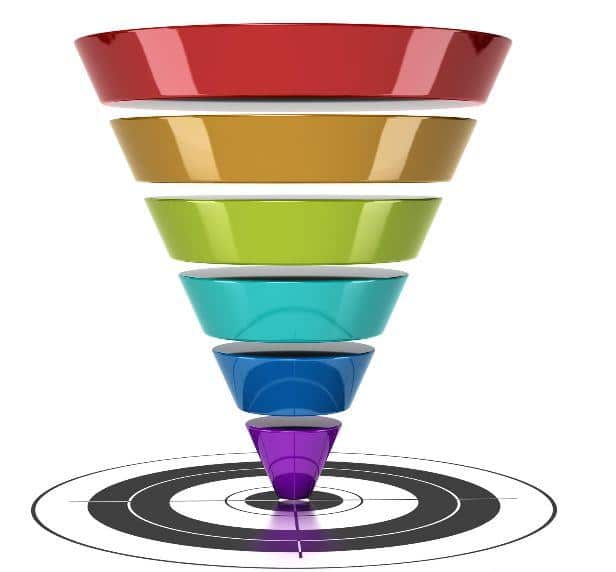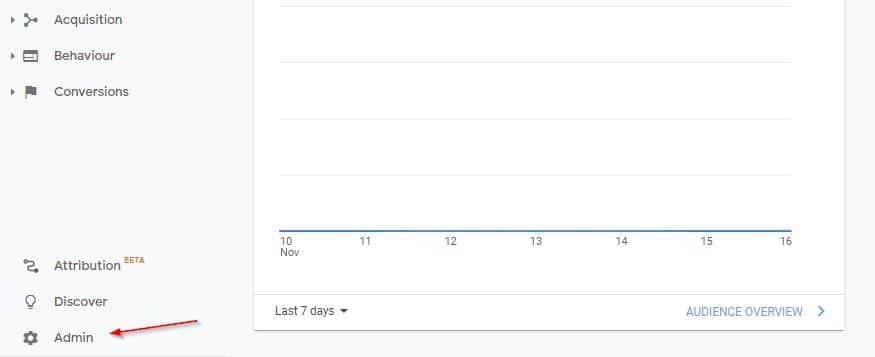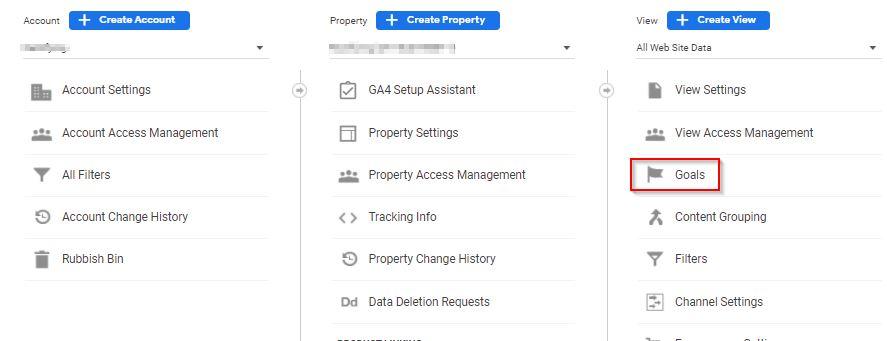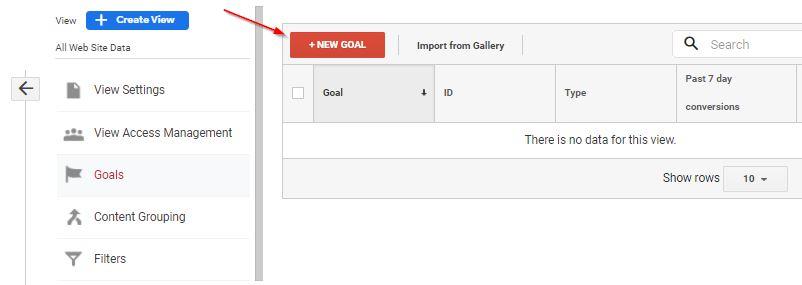How Do Marketing Funnels Work?
While studying marketing analytics, you might have come across an important marketing term “Funnels”.
Ever asked yourself, “How marketing funnels work”?
Understanding funnels is important to analyze how your prospects interact with your business online.
A marketing funnel helps you visualize the path a customer takes:
- They find your brand/product
- They engage with it
- They convert
Funnels provide insights into why some of your prospects don’t convert, helping you market that segment of your audience more effectively.
In this guide, we will dive into how marketing funnels work and how you can create one to win more customers.
Let’s dive in.
How Marketing Funnels Work?
Marketing funnels are a visual representation of the major steps a user takes while interacting with your business online.
In short, it describes the journey of a customer with your brand.
Using a funnel, you can:
- Analyze the steps your prospects take
- Find out any loopholes
- Improve your strategies
It tells you what you should do to influence your prospects at every stage of their journey with you.
The end goal of a marketing funnel is, of course, to drive more conversions.
Although there is no universally accepted definition of a marketing funnel, most companies divide it into three stages:
- Top of funnel (TOFU)
- Middle of funnel (MOFU)
- Bottom of funnel (BOFU)
Four Steps of the Common Marketing Funnel
Every stage of a marketing funnel needs a different approach from a brand depending on where a prospect is in their journey.
Awareness
Your prospect finds out about your business from a friend, a social media ad, or a social media post.
Interest
The prospect becomes your lead and starts taking interest in your business. They think of you as a brand that can solve their problems and start researching more about you.
Desire
The prospect is done with the research phase and is now convinced that you can solve their problems. They want to convert now.
Action
They take the action you wanted them to take; it could be anything like scheduling a call, buying a product, and more.
The action can depend on a variety of factors, including your industry and the customer journey stage.
Maybe your goal is to sell more products; you would want to get your visitors to make a purchase in this case.
Or, you may want your prospects to give out their email addresses so that you can keep connecting with them until they convert
Whatever the action is, when your prospect does something you want them to do, it’s called a conversion.
Here is an example:
Think about the purchase funnel of Amazon, the e-commerce giant.
A visitor goes through several steps before they make a purchasing decision on Amazon.
Here is how their journey looks like with Amazon:
- They visit Amazon.com
- They go to a product page and check it out
- They like the product and add it to their cart
- They go through with the purchase
These are the most important steps in a marketing funnel because they impact the final action.
There can be more steps involved, but unless they affect the action (conversion), they don’t matter.
For instance, someone visiting Amazon’s about page isn’t important because it doesn’t contribute to the final action.
Visualizing a Marketing Funnel

How Marketing Funnels Work?
Think about a funnel. It’s the widest at the opening and the narrowest at the bottom. But, the shift is not abrupt.
The set of steps that a prospect takes before converting is called a funnel. But, why?
Because there are a lot of people involved in the process initially. As the process continues, many of them drop out, which narrows down the funnel.
So, at the bottom of a funnel, there are a few high-quality leads or prospects left. Your sales team still has to convert those bottom-of-funnel leads though.
Losing Customers within a Funnel – Is it Bad?
Losing a major chunk of your prospects in a funnel might seem like a bad thing. The truth is: No matter how hard you try, not everyone that enters your sales funnel will convert.
So, while a lot of people will enter your marketing funnel by visiting your site or checking your ad out, most of them won’t become your customers.
More people in your marketing funnel means a wider funnel. So, if you hear someone saying “widen the funnel”, it just means that you attract more prospects into your funnel.
For instance, attracting more people to your site through content marketing.
What are the Types of Funnels?
Although we are just focusing on marketing funnels in this article, they can be of different types.
The starting point of a marketing funnel is a marketing campaign that gets your brand in front of your target audience.
The campaign can be pay-per-click ads, video ads, social media ads, content marketing campaigns, and more.
In addition to a marketing funnel, you might hear about:
- Webinar campaigns
- Email funnels
- Video marketing funnels
- Sales funnels
- Lead magnet funnels
But, despite having different names, the essence of every funnel is the same: Tracking users’ steps until they convert!
Use of a Marketing Funnel
You don’t only have to use marketing funnels only for purchasing or signing up. You can use a funnel to track how your visitors interact with your site.
For instance, you might want to track your newsletter signups. There are three main steps involved in this type of funnel:
- Viewing a newsletter form
- Submitting the form
- Confirming email
Say your visitor just submits a form and skips the last step of the funnel. You could retarget that prospect asking them to check their email for a confirmation link.
Or, it could be a simple page conversion, including the following two steps:
- Viewing a signup form
- Submitting signup
So, you need to figure out what your goals are with your visitors and come up with an effective funnel to achieve those goals.
Once you have the necessary information, you can then optimize your funnel and improve conversions.
How are Marketing Funnels Beneficial?
The benefit of a marketing funnel lies in the data it provides to businesses. The set of data or the funnel report tells you where you are losing customers.
The data tells you at which point your prospects are leaving your funnel.
This is why a funnel that loses customers is sometimes called a “Leaky funnel”.
To understand a leaky funnel, let’s take an example.
Here is how software as a service (SAAS) funnel looks like:
- Your prospect visits your site
- They sign for the trial
- They use your software
- They upgrade to a paid version
A funnel lets you know at which of those four stages you are losing your customers.
Let’s say a number of people signed up for your software but didn’t upgrade to a premium plan.
You would want to identify the roadblock. Maybe it’s because your onboarding process isn’t as effective?
Or, maybe you want to narrow down the top of your funnel for more qualified leads. People that are genuinely interested in using your software.
Marketing Funnel Example
Let’s take a real-life example of a marketing funnel: An e-commerce store.
Here are the steps involved:
- A customer visits the store
- They view the product page
- They add it to the cart
- They enter their checkout information
- They click “Purchase” and finish the checkout process
Thanks to the marketing funnel, an e-commerce store owner can track different metrics like:
- Time on a page
- Clicks
- And, other helpful metrics
Google Analytics Marketing Funnel
Google Analytics is a pretty simple and effective way to track the actions a visitor takes on your site before converting.
Here is how you can create a marketing funnel with Google Analytics for free.
Sign in and go to “Admin”.

Source: Google.com
Select “Goals”.

Source: Google.com
Then, click “New goal”.

Source: Google.com
Just create a goal and start tracking your prospects.
Keep in mind that Google Analytics offers a basic funnel; it’s great if you are just getting started.
Final Thoughts
We have talked about everything you need to know about marketing funnels. Let’s quickly summarize everything.
- A conversion is when someone on your site takes an action you want them to take, e.g., fill out a form, join your newsletter, or purchase your product
- A funnel tracks the steps a prospect takes before converting.
- For instance, an e-commerce funnel might look like this:
- Visiting the store
- Viewing a product
- Placing it in their cart
- Purchasing
- Funnel reports tell you which parts of your funnel are losing customers. Using the data, you can optimize your store to improve the conversion rate.
- If you are new to marketing funnels, you can create one for free with Google Analytics. It’s a simple, free, and effective way to create marketing funnels.





